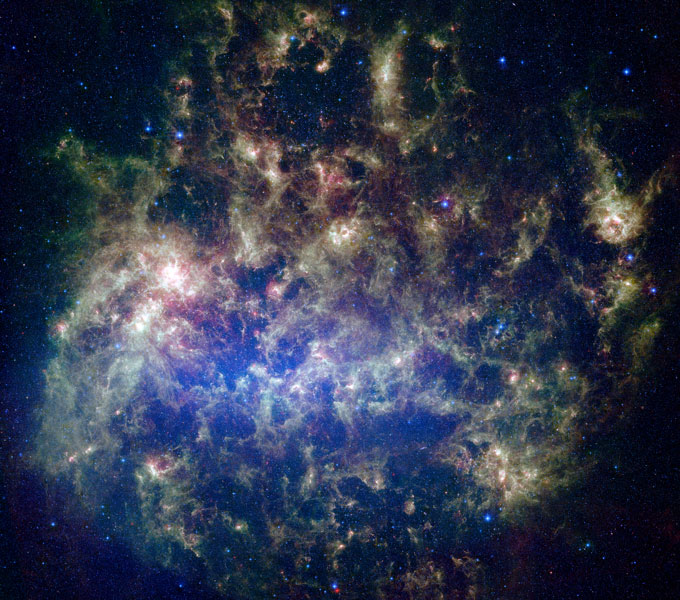|
|
 Infra-red view of the Large Magellanic
Cloud
Infra-red view of the Large Magellanic
Cloud
Image courtesy of NASA/JPL-Caltech/M Meixner and the SAGE Legacy
Team |
online textbooks
useful stuff for the lab
-
NASA's Planetary Fact Sheets: useful for checking physical and orbital parameters of the planets
-
StaTable for Windows:
downloadable package which calculates probabilities for a number of common statistical distributions. Useful for working out just how likely it is that your value is consistent with the textbook!
-
Quickcalcs: an online statistical calculator: enter your mean and standard deviation and it will produce a probability table for you.
-
The SIMBAD Astronomical Database: enter the catalogue number of a celestial object (and it's very broad-minded in what it will accept) and it will provide a list of useful information such as type of object, position, etc. Useful for checking spectral types of stars, for example.
observing
-
Heavens Above: enter your location and obtain customised star charts, lists of planetary positions, visibility of satellites or the International Space Station, etc.
-
Algol: Sky and Telescope's web page on the classic eclipsing variable star, complete with calculator for the times of the next few minima. A more general article from the same site covers 12 naked-eye variable stars.
-
The VizieR Catalogue Service: a catalogue of astronomical catalogues! Probably more useful for 3rd and 4th year observing projects.
pictures
miscellaneous
|
Hicks Building, Hounsfield Road, Sheffield S3 7RH, UK
|